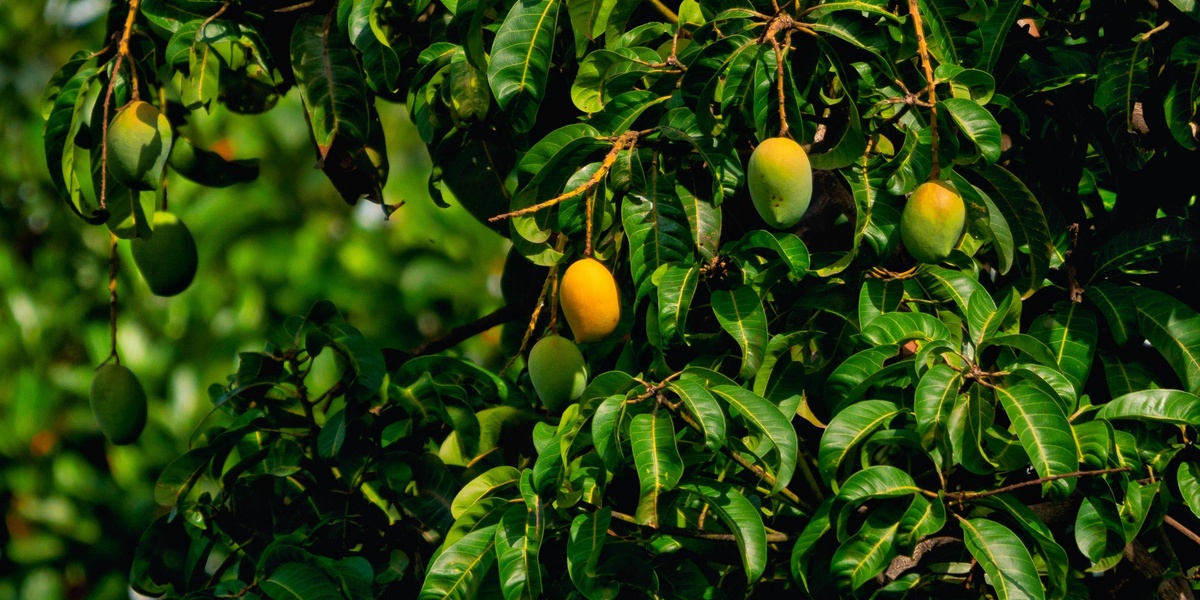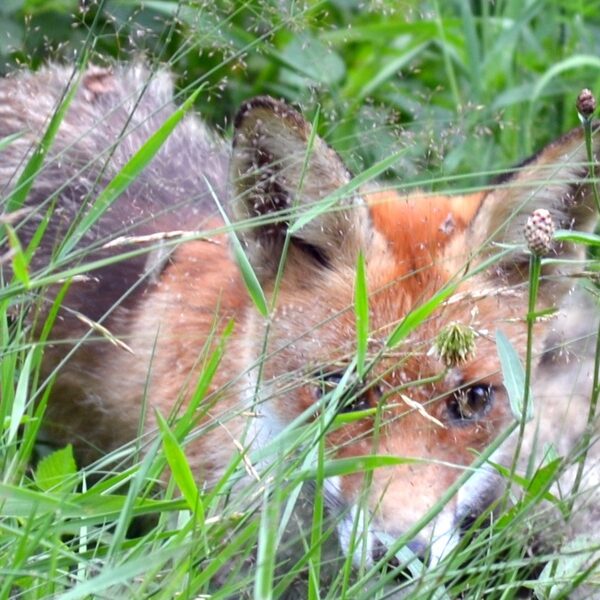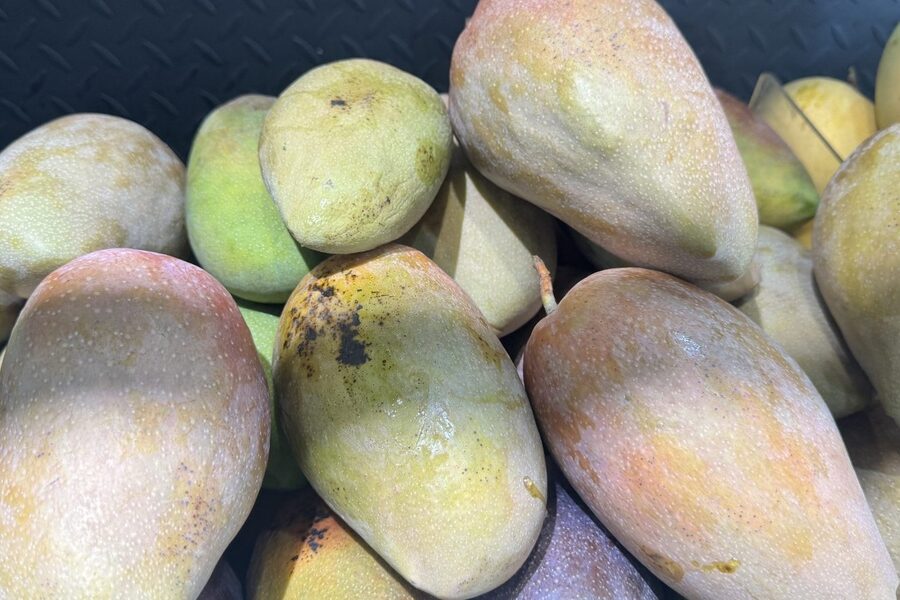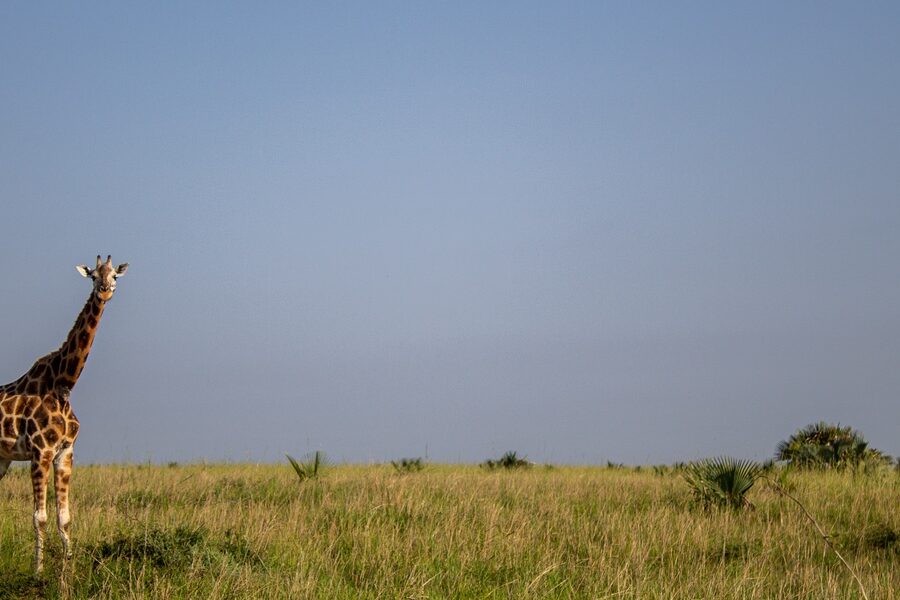Sudan’s landscape, from Nile floodplains to dry Sahel, supports a surprising variety of edible plants. Local markets and gardens mix wild species and cultivated crops that reflect seasonal rhythms and regional tastes.
There are 28 Fruits of Sudan, ranging from African Fan Palm to Watermelon. For each, the data is organized as Scientific name,Region,Size (cm); you’ll find the full list below.
Which of these fruits are native to Sudan?
Many species are native or long-naturalized; check the Region column to see distribution by habitat. For example, African Fan Palm is native to Sudan’s riverine areas, while some watermelons and other familiar fruits arrived through trade. Use the Scientific name to confirm origin in botanical references.
How should I use the Size (cm) information when identifying or buying fruit?
Size gives a quick guide for identification and portioning—diameter or length helps distinguish similar species, estimate yields for recipes, and decide storage needs. Treat sizes as averages, since local cultivars and growing conditions can cause variation.
Fruits of Sudan
| Name | Scientific name | Region | Size (cm) |
|---|---|---|---|
| Mango | Mangifera indica | Kassala, Blue Nile, Sennar | 10-20 |
| Date | Phoenix dactylifera | Northern State, River Nile | 3-7 |
| Guava | Psidium guajava | Blue Nile, Kassala, Gezira | 5-10 |
| Orange | Citrus sinensis | Kassala, Gezira, Blue Nile | 6-10 |
| Grapefruit | Citrus paradisi | Gezira, Blue Nile, Kassala | 10-15 |
| Lemon | Citrus limon | Widespread | 5-8 |
| Banana | Musa spp. | Kassala, Blue Nile, Sennar | 15-25 |
| Baobab | Adansonia digitata | Kordofan, Darfur, Blue Nile | 20-30 |
| Doum Palm | Hyphaene thebaica | Widespread, especially near rivers | 6-10 |
| Christ’s Thorn | Ziziphus spina-christi | Widespread savanna regions | 1-2 |
| Tamarind | Tamarindus indica | Central and Southern Sudan | 10-15 |
| Jujube | Ziziphus jujuba | Widespread cultivation | 2-4 |
| Grewia | Grewia tenax | Kordofan, Darfur, Red Sea Hills | 0.5-1 |
| Desert Date | Balanites aegyptiaca | Widespread savanna and drylands | 3-5 |
| Watermelon | Citrullus lanatus | Kordofan, Darfur, Gezira | 20-50 |
| Sweet Melon | Cucumis melo | Widespread cultivation | 15-25 |
| Papaya | Carica papaya | Southern regions, Blue Nile | 15-30 |
| Pomegranate | Punica granatum | Northern State, Jebel Marra | 8-12 |
| Grape | Vitis vinifera | Northern State, Khartoum | 1-2 |
| Tallow Tree | Ximenia americana | Kordofan, Darfur, Southern regions | 2-3 |
| African Fan Palm | Borassus aethiopum | Southern regions, Nuba Mountains | 12-18 |
| Snot Apple | Azanza garckeana | Blue Nile, Southern Kordofan | 2-3 |
| Custard Apple | Annona squamosa | Limited cultivation, urban gardens | 5-10 |
| Gamboge Tree | Garcinia livingstonei | Southern Sudan | 2-4 |
| Tamarillo | Solanum betaceum | Jebel Marra (Darfur) | 4-8 |
| Sycamore Fig | Ficus sycomorus | Widespread, especially near rivers | 2-4 |
| Carob | Ceratonia siliqua | Red Sea Hills | 10-20 |
| Monkey Orange | Strychnos spinosa | Southern Kordofan, Blue Nile | 7-12 |
Images and Descriptions
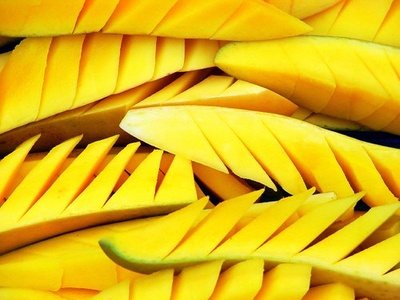
Mango
A beloved tropical fruit, Sudanese mangoes are sweet and fibrous. Harvested in summer (April-July), they are eaten fresh, juiced, or made into jams. The ‘Kassala’ variety is particularly famous for its flavor and vibrant color.
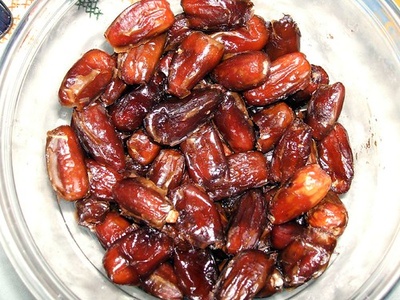
Date
The cornerstone of Northern Sudanese agriculture, date palms thrive along the Nile. Harvested in late summer, dates are eaten fresh (Balah) or dried (Tamr) and are a vital source of energy and cultural heritage.
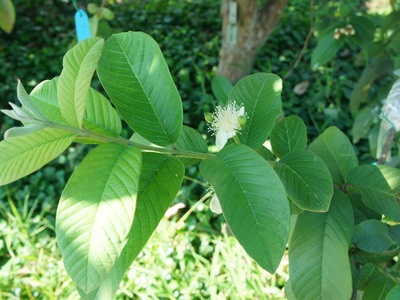
Guava
A highly aromatic fruit with pink or white flesh, grown in gardens and farms. Available nearly year-round, guavas are eaten fresh, juiced, or made into a popular thick jam. Their strong scent is a common feature in local markets.
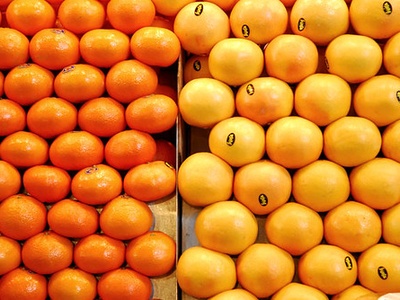
Orange
A major citrus crop, Sudanese oranges are known for being exceptionally juicy. Primarily grown in irrigated schemes, they are harvested in winter and are a popular choice for fresh juice sold by street vendors across the country.
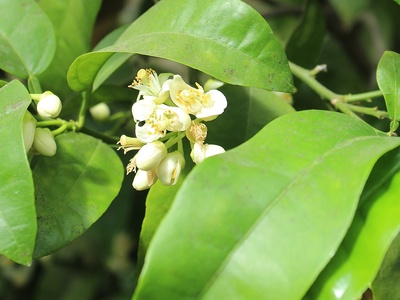
Grapefruit
Grown in the same regions as oranges, grapefruit is a large citrus fruit valued for its tart and tangy flavor. Eaten fresh for breakfast or juiced, it’s a winter season fruit that adds a refreshing zest to the local diet.
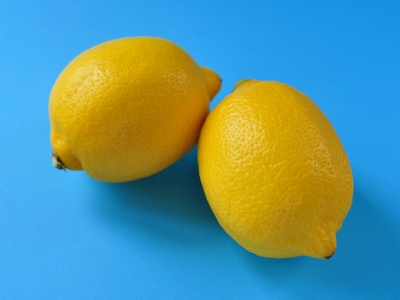
Lemon
An essential ingredient in Sudanese cuisine and drinks. Lemons are grown widely in household gardens and farms. They are used to flavor stews, salads, and are squeezed into water, tea, and coffee for a zesty kick.
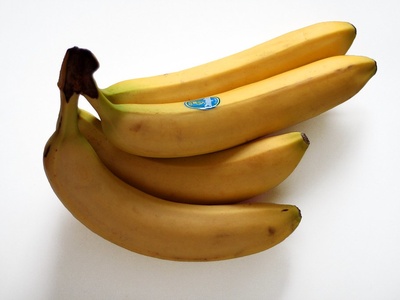
Banana
A staple fruit grown in the more humid southern and eastern regions of Sudan. Bananas are available year-round and are consumed as a quick, nutritious snack, making them a common sight in fruit stalls in cities and towns.
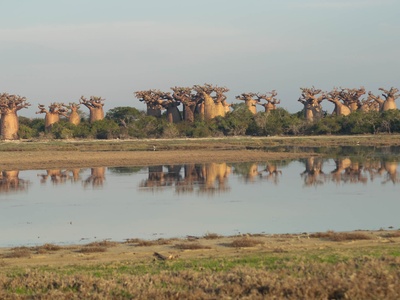
Baobab
Known as ‘Gongolez,’ this large, velvety pod’s dry, chalky pulp is rich in Vitamin C. It is mixed with water to make a refreshing, tangy drink (‘Tabaldi’) or used as a thickening agent in traditional foods.
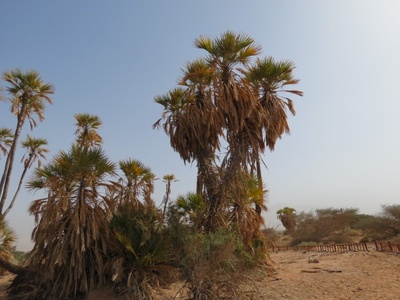
Doum Palm
The fruit of the Doum palm, known as ‘Dom,’ has a hard, shiny brown rind. The fibrous, sweet-smelling pulp is eaten raw or powdered and mixed with water for a traditional drink. The hard kernel is also edible.
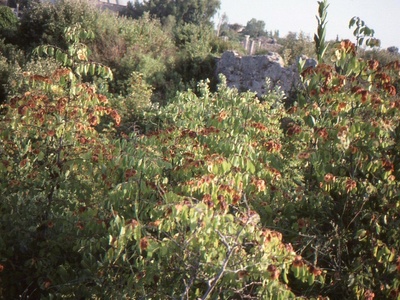
Christ’s Thorn
Called ‘Nabak,’ these small, crunchy, apple-like fruits grow on a thorny tree common in drylands. Harvested in winter, they are a popular snack for children and are sold in markets, offering a sweet and slightly tart flavor.
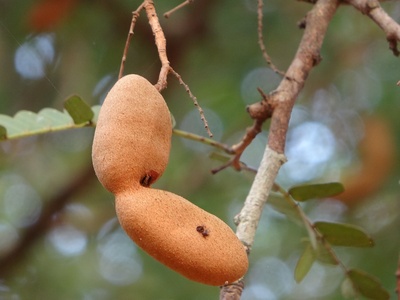
Tamarind
Known as ‘Aradeib,’ the pods of the tamarind tree contain a sticky, tart pulp. This pulp is dissolved in water to create a popular sour drink, used as a flavoring in stews, or made into candies and sauces.
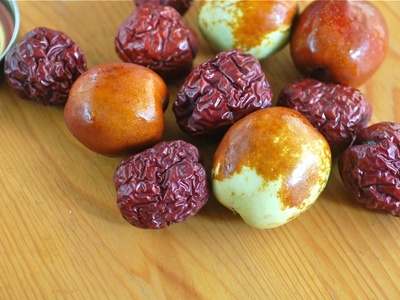
Jujube
Larger than its wild cousin Nabak, ‘Annab’ is a cultivated jujube. It has a sweet, apple-like taste and a crisp texture when fresh, wrinkling and becoming chewy like a date when dried. It’s eaten as a healthy snack.
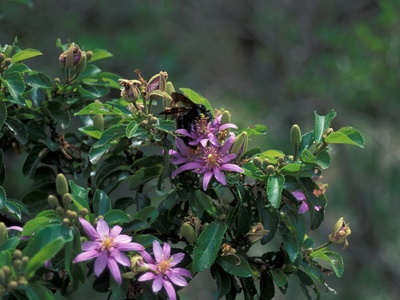
Grewia
These small, orange-red berries, called ‘Guddeim,’ grow on a hardy desert shrub. They have a sweet-and-sour taste and are often made into a thick, nutritious porridge or a refreshing drink, especially popular during Ramadan.
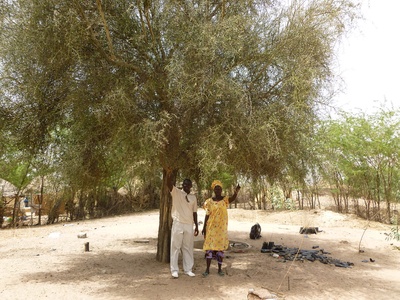
Desert Date
Locally known as ‘Lalob,’ this fruit has a bittersweet, fibrous pulp surrounding a large seed. The fruit is eaten raw or boiled, and the oil-rich kernel is a valuable source of edible oil in rural communities.
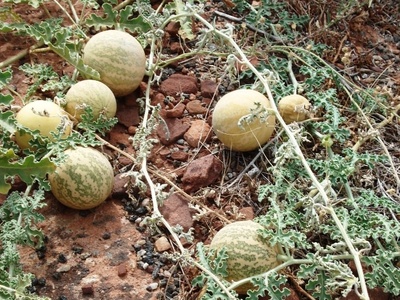
Watermelon
Believed to have originated in this region, wild and cultivated watermelons thrive in sandy soils. It is a crucial source of hydration and nutrition during the hot, dry summer, enjoyed chilled as a refreshing slice.

Sweet Melon
A popular summer fruit, sweet melons (‘Shammam’) are widely cultivated in irrigated areas. Their sweet, fragrant flesh is a refreshing treat during the intense heat, often served chilled as a dessert or snack in homes and cafes.
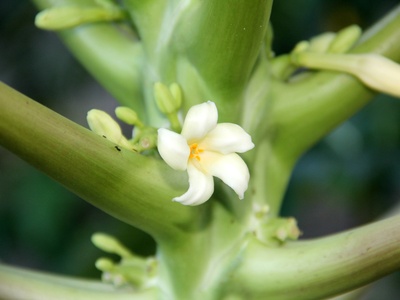
Papaya
A tropical fruit grown in the warmer, more humid parts of Sudan. The sweet, orange flesh of the papaya is eaten fresh, often for breakfast. It is valued for its digestive enzymes and its year-round availability in local markets.
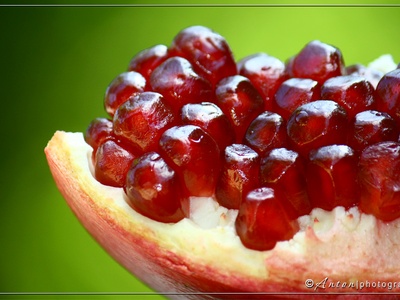
Pomegranate
Grown in cooler, elevated areas like Jebel Marra and along the Nile. The fruit’s juicy, gem-like seeds (arils) are eaten fresh or juiced. It’s considered a delicacy and is available in the autumn season.
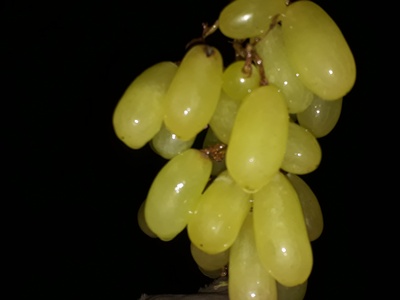
Grape
Cultivation of grapes is concentrated in the north, especially around Khartoum. Sudanese grapes are typically sweet and eaten fresh during the winter and spring months. They are a high-value crop sold in urban markets.
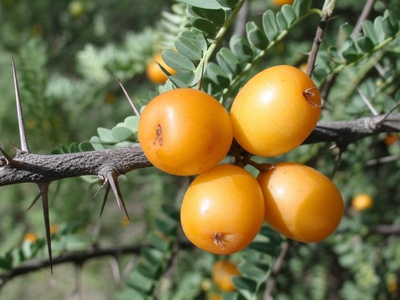
Tallow Tree
Known as ‘Al-hamid,’ this small, yellow or orange plum-like fruit has a tart, almond-flavored pulp. It grows wild on a thorny shrub and is eaten fresh, though it can be quite sour. The kernel also yields an edible oil.
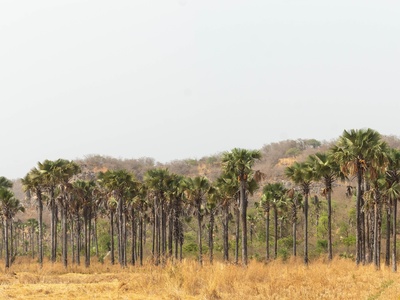
African Fan Palm
This large, fibrous fruit has a sweet, orange-colored pulp that is eaten raw or cooked. The young, jelly-like seeds from immature fruits are also a popular and refreshing delicacy, similar to a lychee in texture.
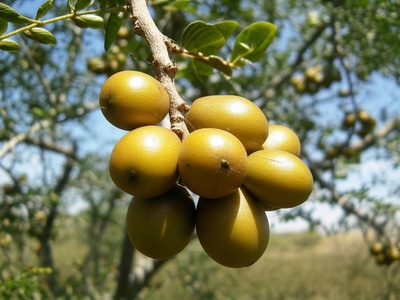
Snot Apple
Locally called ‘Sidir,’ this chewy, sweet fruit has a unique texture. It grows on a small tree in wooded savanna and is a favorite snack, especially among children. It can be eaten fresh or boiled into a porridge.
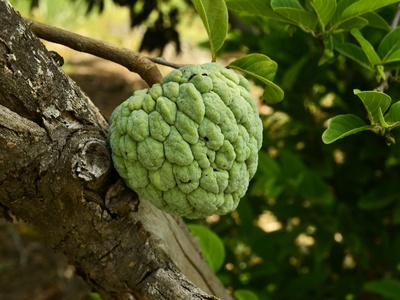
Custard Apple
Known as ‘Gishta,’ this fruit has a sweet, creamy white pulp with a custard-like consistency. It’s grown on a small scale in gardens and is considered a dessert fruit, eaten fresh with a spoon.
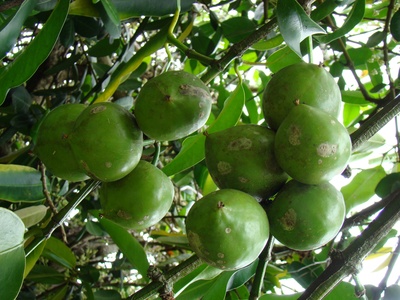
Gamboge Tree
This small, bright orange fruit, often called African mangosteen, has a sweet-acidic taste. It grows wild in the southern woodland areas and is eaten fresh. The fruit is appreciated for its refreshing, juicy pulp.
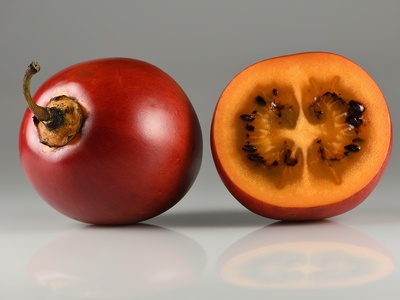
Tamarillo
Also known as Tree Tomato, it is cultivated in the unique microclimate of the Jebel Marra highlands. This egg-shaped fruit has a tangy, complex flavor and is used to make juices, sauces, and is sometimes eaten fresh.
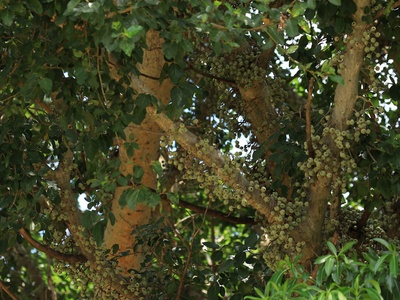
Sycamore Fig
Known as ‘Gameiz,’ this wild fig tree is common along the Nile. It produces clusters of small, sweet fruits directly on its trunk and branches. They are an important traditional food source for both people and wildlife.
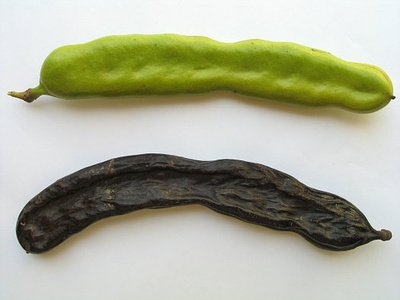
Carob
Known as ‘Kharoub,’ this tree grows in the arid eastern regions. The leathery brown pods contain a sweet pulp that is often dried and ground into a powder to make a nutritious drink or used as a cocoa substitute.

Monkey Orange
A hard-shelled wild fruit that must be cracked open to reveal seeds covered in a sweet-sour, fragrant pulp. The pulp is eaten fresh, but the seeds are toxic and must be carefully spit out and discarded.
